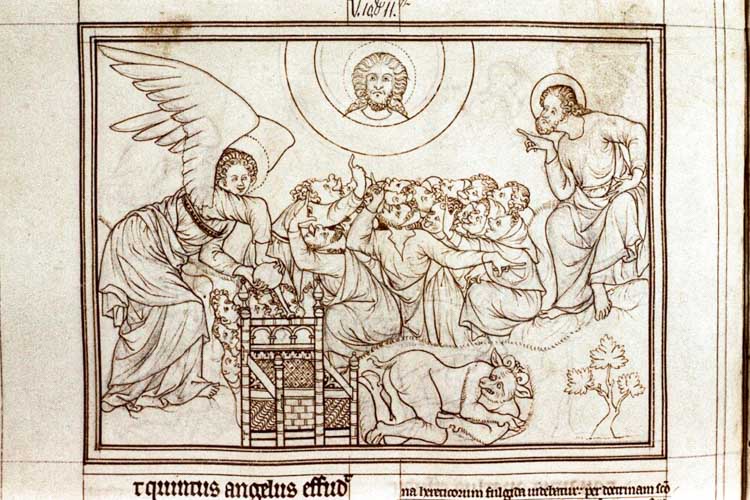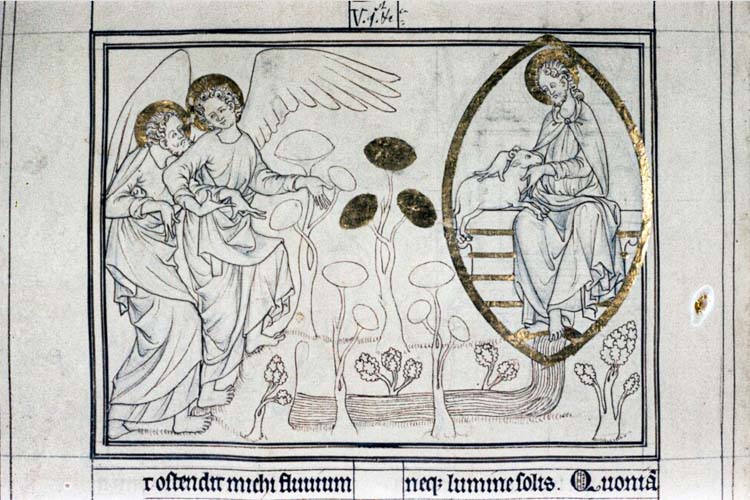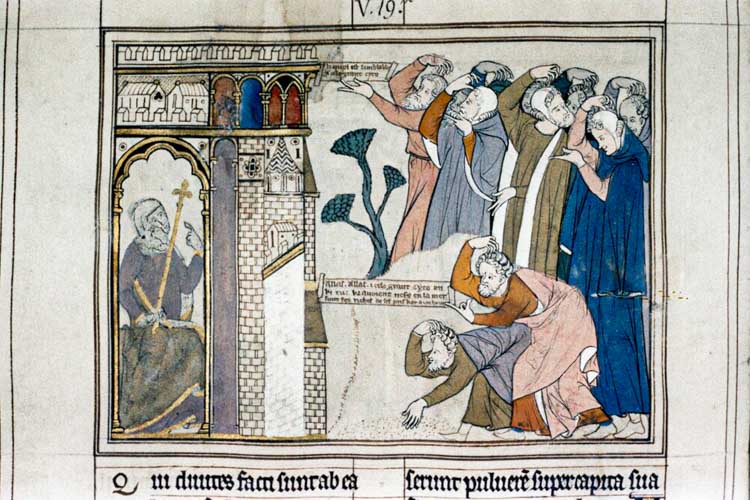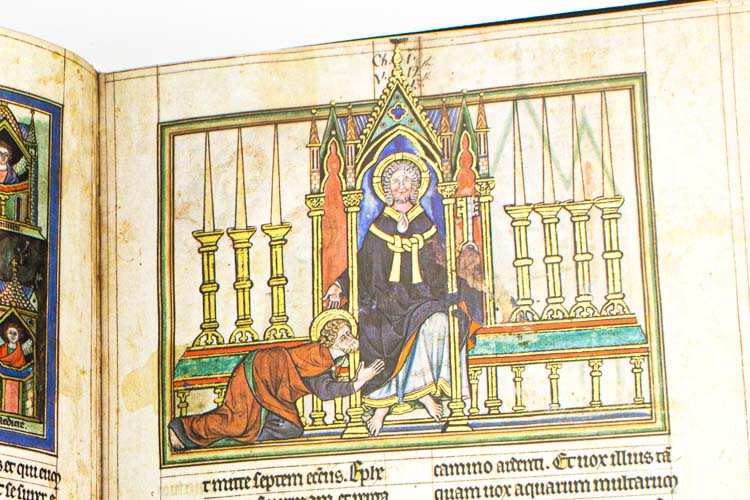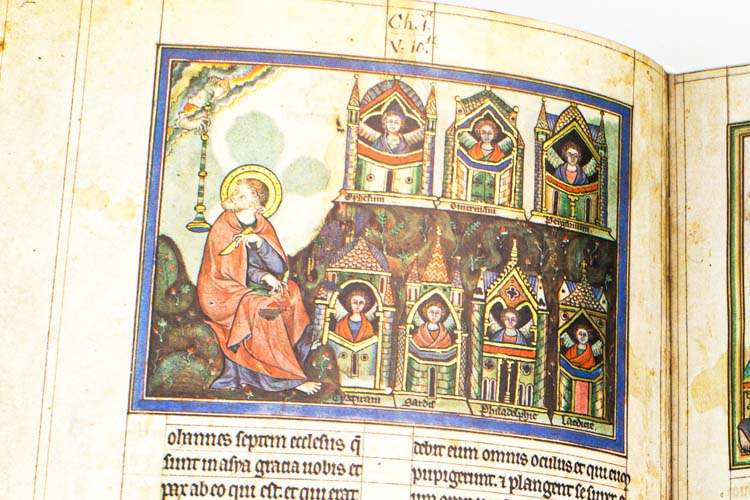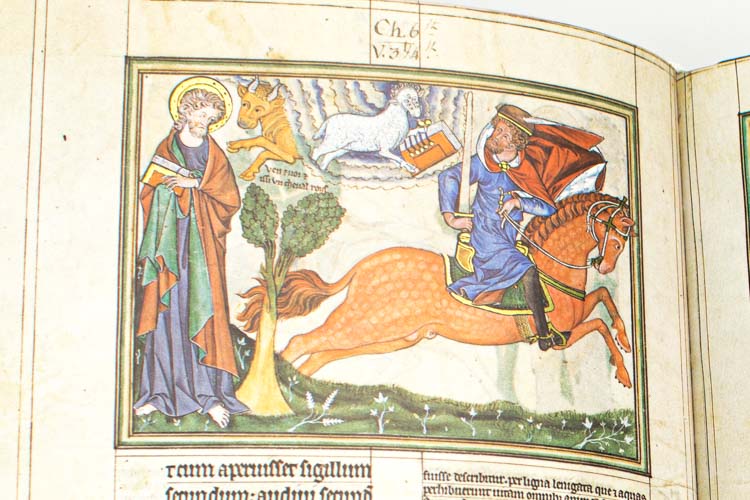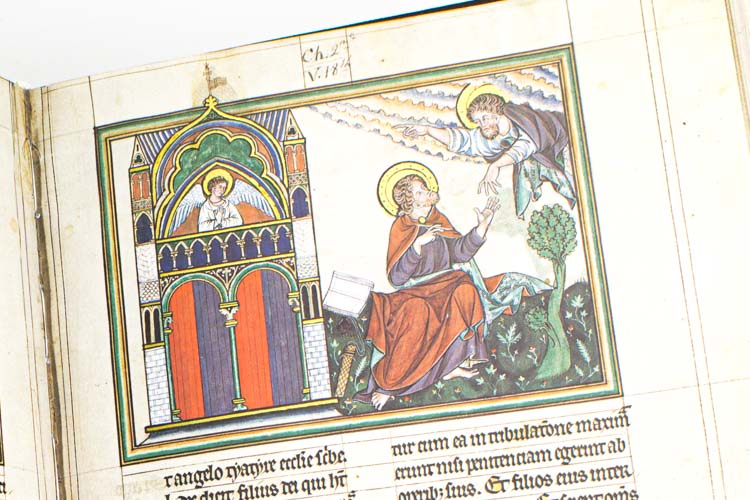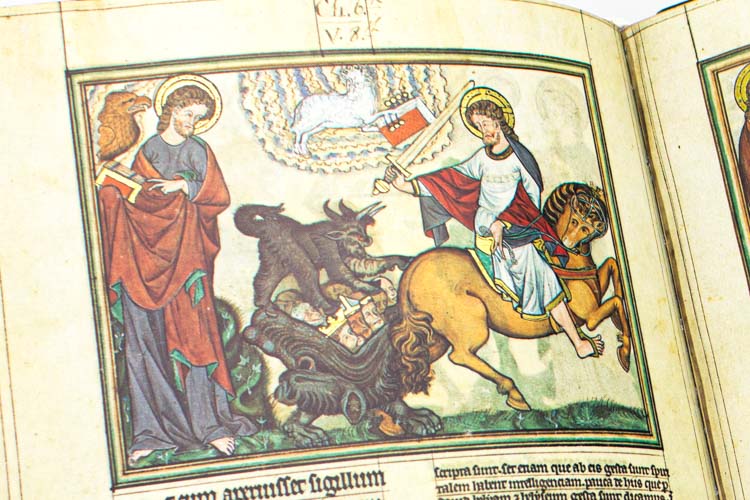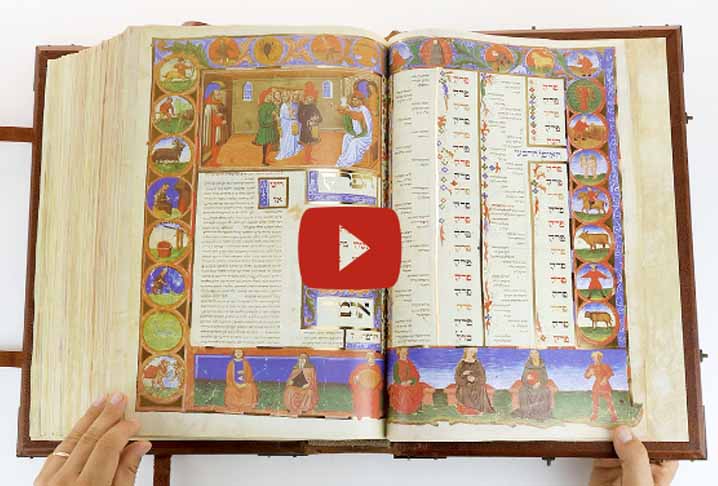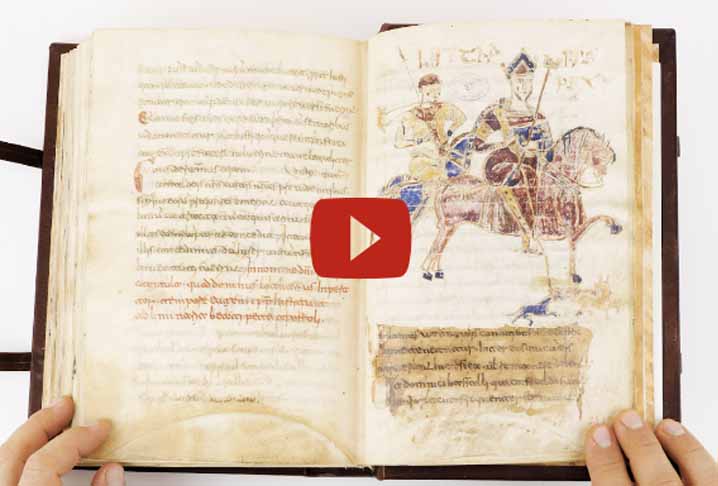If you are curious to know how books were decorated in the high Middle Ages, take a look at the various stages of completion of the miniatures in this English Apocalypse.

Ms. Douce 180 is one of the most exceptional English manuscripts dating back to the 13th century. The number of the Oxford Apocalypse’s alone, 97 in total, makes it a one-of-a-kind example when compared to other illuminated manuscripts from this era.
The manuscript’s artful and lavish decoration is a testimony to the strong personality of the master responsible for its decoration.
Discovering Manuscript Manufacture in the High Middle Ages
The Latin text of Saint John’s Revelation, possibly one of the most mysterious books from the New Testament, is flanked by no less than 97 illuminations. The gorgeously framed depictions are not just a simple aid to understanding the text: they are, on the other hand, centrally important.
The illuminations are unique in that they offer insight into manuscript manufacture in the high Middle Ages, showing various stages of completion in incredible detail.
The artist who decorated the Oxford Apocalypse did in fact use many elements that can be considered groundbreaking in their time, namely the use of landscape, which endows the illuminations with awe-inspiring albeit unique briskness.
A Book for a King
King Edward I of England and his wife Eleanor of Castilia-Leon were the ones who commissioned the Oxford Apocalypse shortly before they took power in 1272. Though it is generally thought that this manuscript was crafted at the court school of Westminster, scholars have close to no information about the book’s subsequent history.
What they do know is that it was owned by Francis Douce before it was later acquired by the Bodleian Library in Oxford, to whom Douce left it in 1834.
Photo credit: © Bodleian Libraries, University of Oxford
NEW WEEKLY VIDEOS
Find our more about Avicenna’s Canon of Medicine (Bologna, Biblioteca Universitaria di Bologna) on our website!
Find our more about the Codex Legum Langobardorum (Cava de’ Tirreni, Biblioteca Statale del Monumento Nazionale della Badia) on our website!


